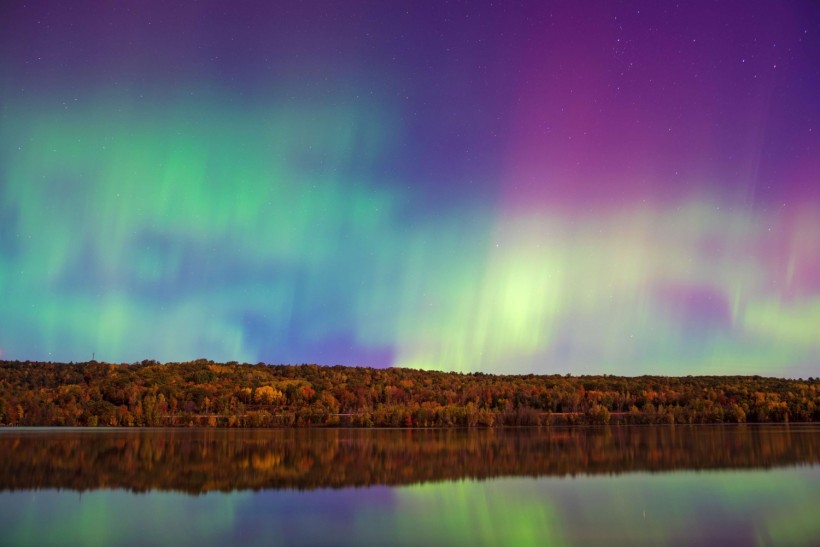The University of Alaska Fairbanks forecasts the visibility of the northern lights in multiple U.S. states this week. With the Kp-index reaching five and six on Wednesday and Thursday, respectively, indicating a geomagnetic storm, there is a good chance to witness the mesmerizing aurora borealis phenomenon, including in parts of Idaho on Thursday.

Aurora in the US
US States That Will Be Seeing Aurora This Week
The Kp-index, a measure of geomagnetic activity, is expected to reach five and six on Wednesday and Thursday, respectively, indicating a geomagnetic storm.
According to NPR's report, the phenomenon of the aurora borealis, also known as the northern lights, may be visible in various states such as Idaho, Maine, Maryland, Massachusetts, Michigan, Minnesota, Montana, Nebraska, New Hampshire, New York, North Dakota, Ohio, South Dakota, Vermont, Washington, Wisconsin, and Wyoming.
On Wednesday, July 12, the storm will be prominently visible on the horizon from locations including Seattle, Des Moines, Chicago, Cleveland, Boston, and Halifax.
On Thursday, July 13, the storm will intensify, providing opportunities for overhead viewing in Minneapolis, Milwaukee, and Bay City, while it will be visible on the horizon in Salem, Boise, Cheyenne, Lincoln, Indianapolis, and Annapolis.
Auroras originate from solar wind emitted by the sun, and even during periods of calm solar winds, auroras can be observed in certain parts of the Earth, although their visibility might be hindered by clouds or sunlight.
Typically, this phenomenon is most commonly seen in Alaska, Canada, and Scandinavian countries like Greenland and Iceland during times of average activity, with late February to early April being the optimal period for viewing auroras in Alaska.
However, as the activity intensifies, an increased number of U.S. states, such as North Dakota and Michigan, have the opportunity to witness the lights. Additionally, when the auroral activity is relatively strong, the Southern Hemisphere, including places like New Zealand, can also experience the stunning display of auroras.
READ ALSO: Skywatchers View Rare Red Auroras Through Naked Eye
How To See the Aurora This Week
The institute advises that the best conditions for observing auroras occur when the sky is clear and dark. As CBS News reported, these captivating lights are most visible during the equinox periods, which mark the longest days of sunlight in the spring and fall seasons. Solar storms, which happen approximately every 27 days, are responsible for generating auroras.
According to the National Oceanic and Atmospheric Administration, the optimal time to witness the lights is typically within an hour or two of midnight, falling between 10 p.m. and 2 a.m. local time. To assist in tracking the movement of the auroras, the organization provides an animated forecast.
NASA's Parker Solar Probe, designed to explore the Sun, has gathered valuable information on the solar storms that give rise to the aurora borealis. These storms involve solar winds traveling 93 million miles to reach Earth's atmosphere.
As they interact with the planet's magnetic field, they create a turbulent flow of magnetic fields and charged particles, which release electrical energy into the upper atmosphere, resulting in breathtaking auroral displays.
However, it is worth noting that auroras can also have disruptive effects on communication systems, as demonstrated by the Carrington Event in 1859, a powerful solar eruption that caused widespread disruption to telegraph and electrical systems.
The Sun's production of intense solar winds follows an 11-year cycle, with the next peak in activity anticipated around 2025. During this period, auroras are expected to be more observable at lower latitudes, providing increased opportunities for viewing these natural wonders.
RELATED ARTICLE: French Astronomer Thomas Pesquet Captures Stunning Aurora Glowing To Earth From ISS
Check out more news and information on Space in Science Times.














